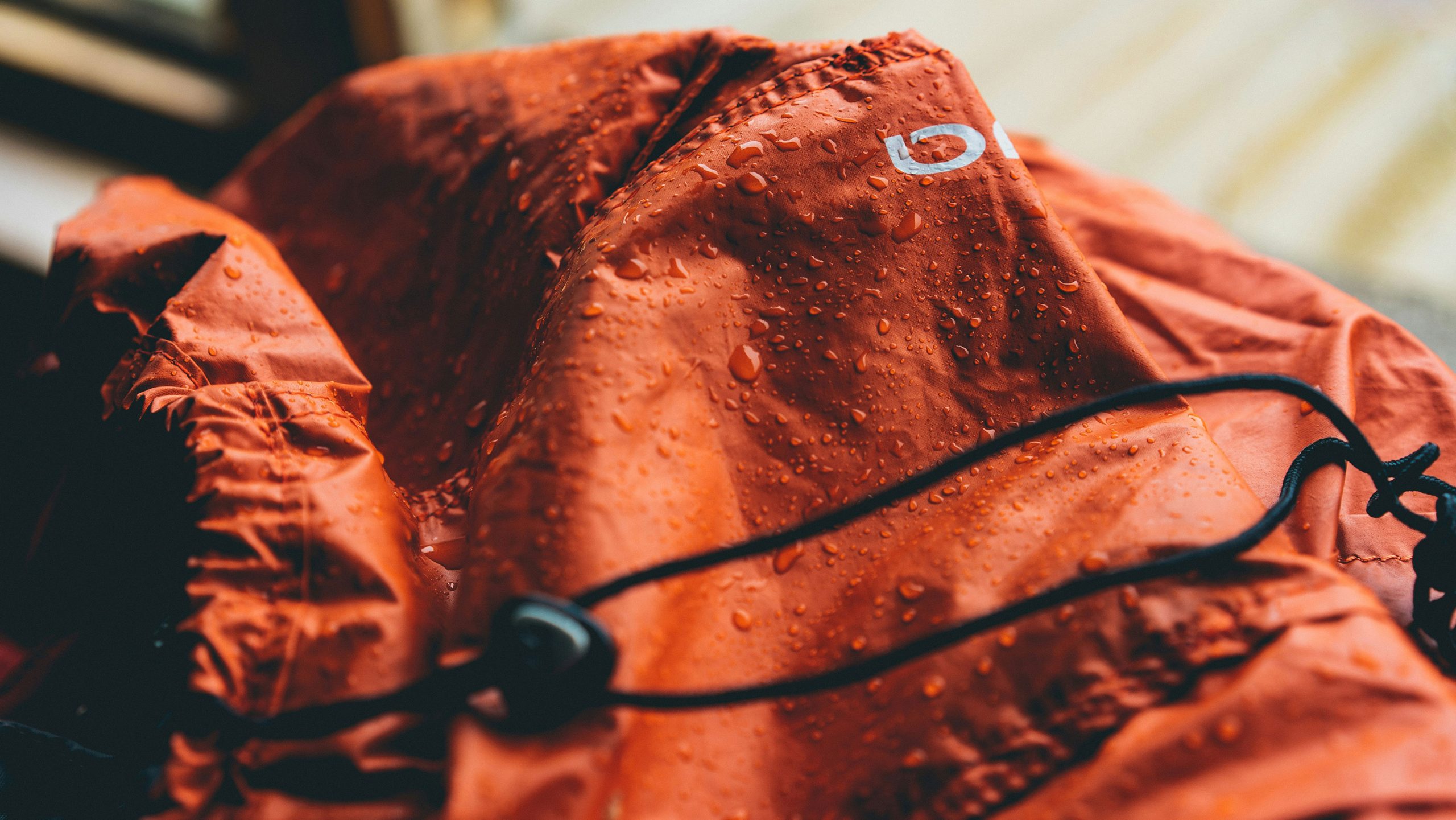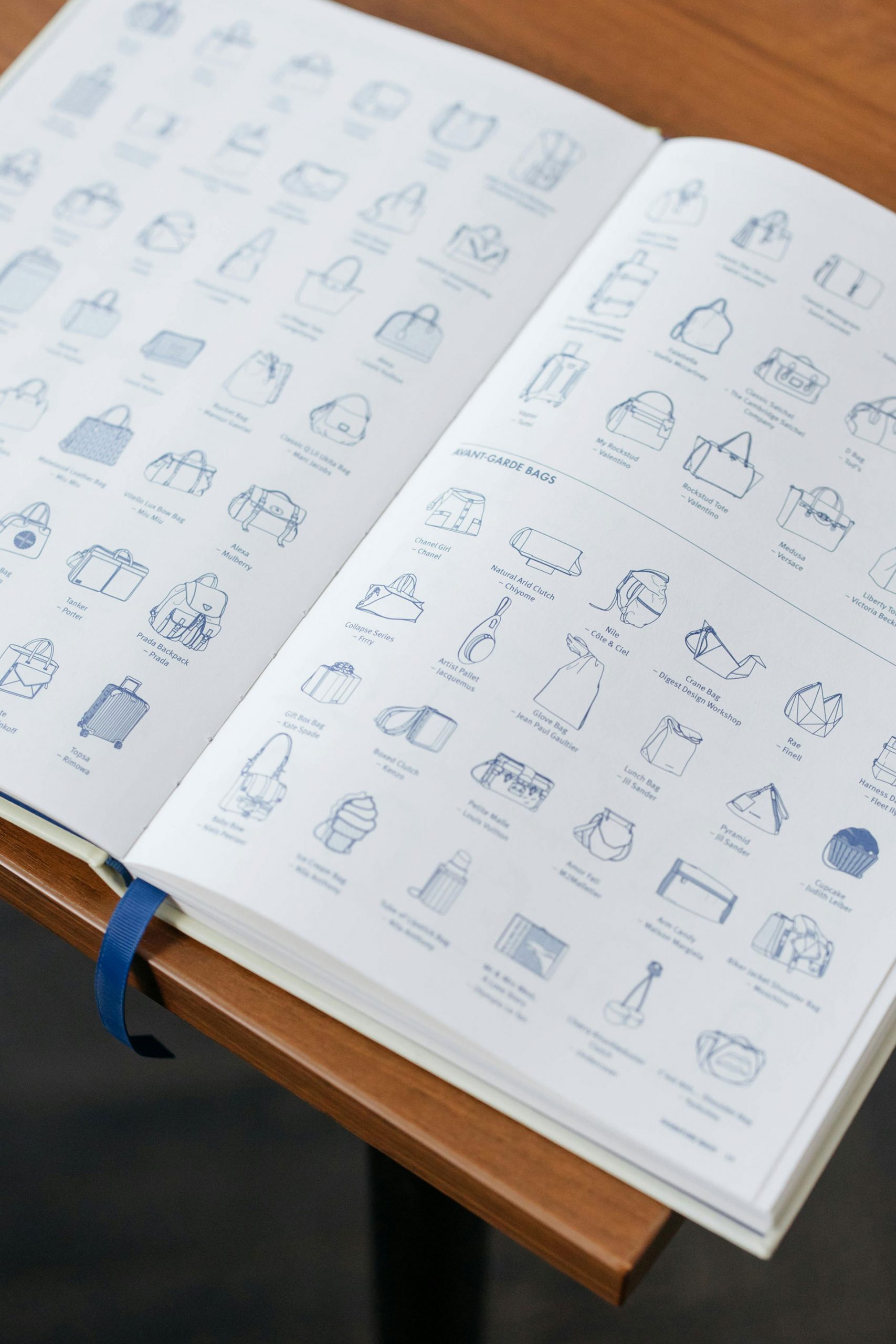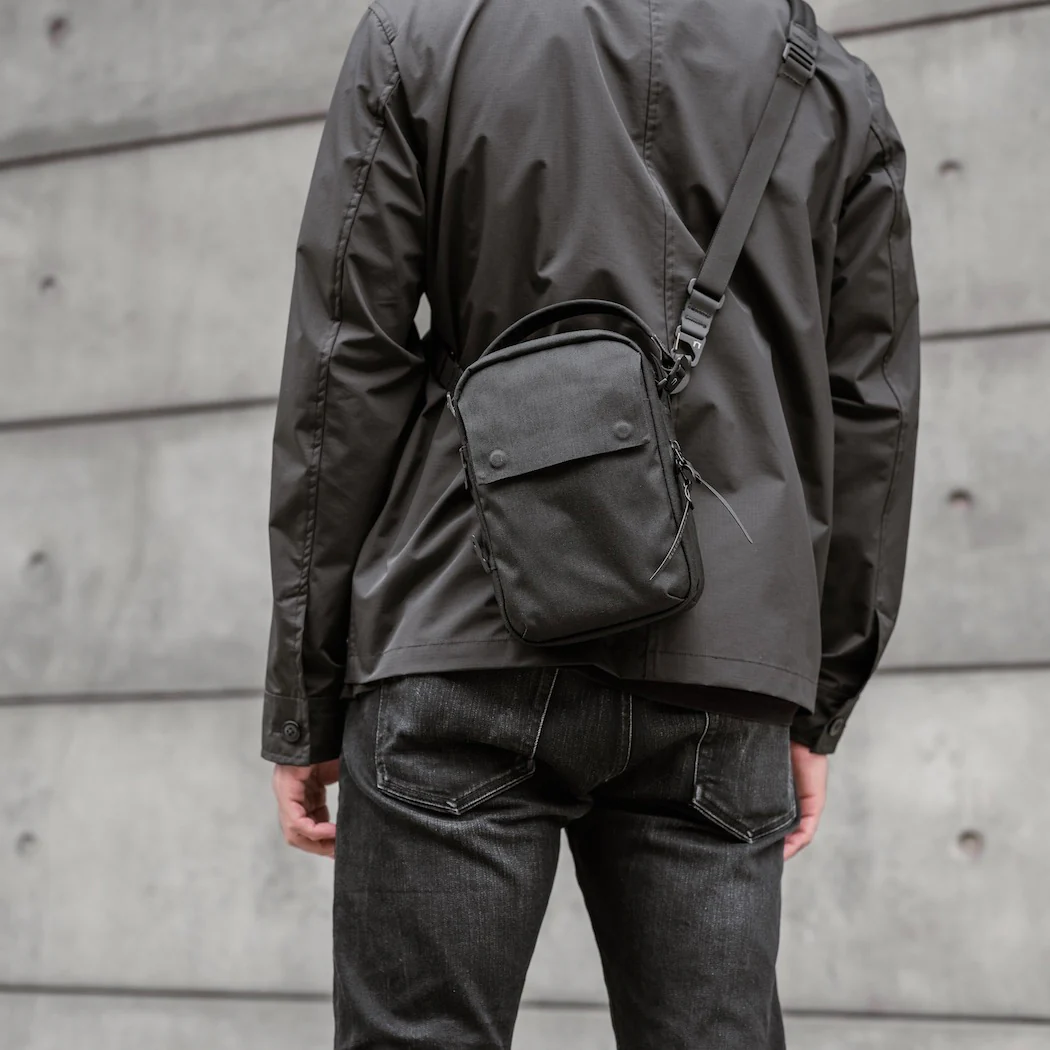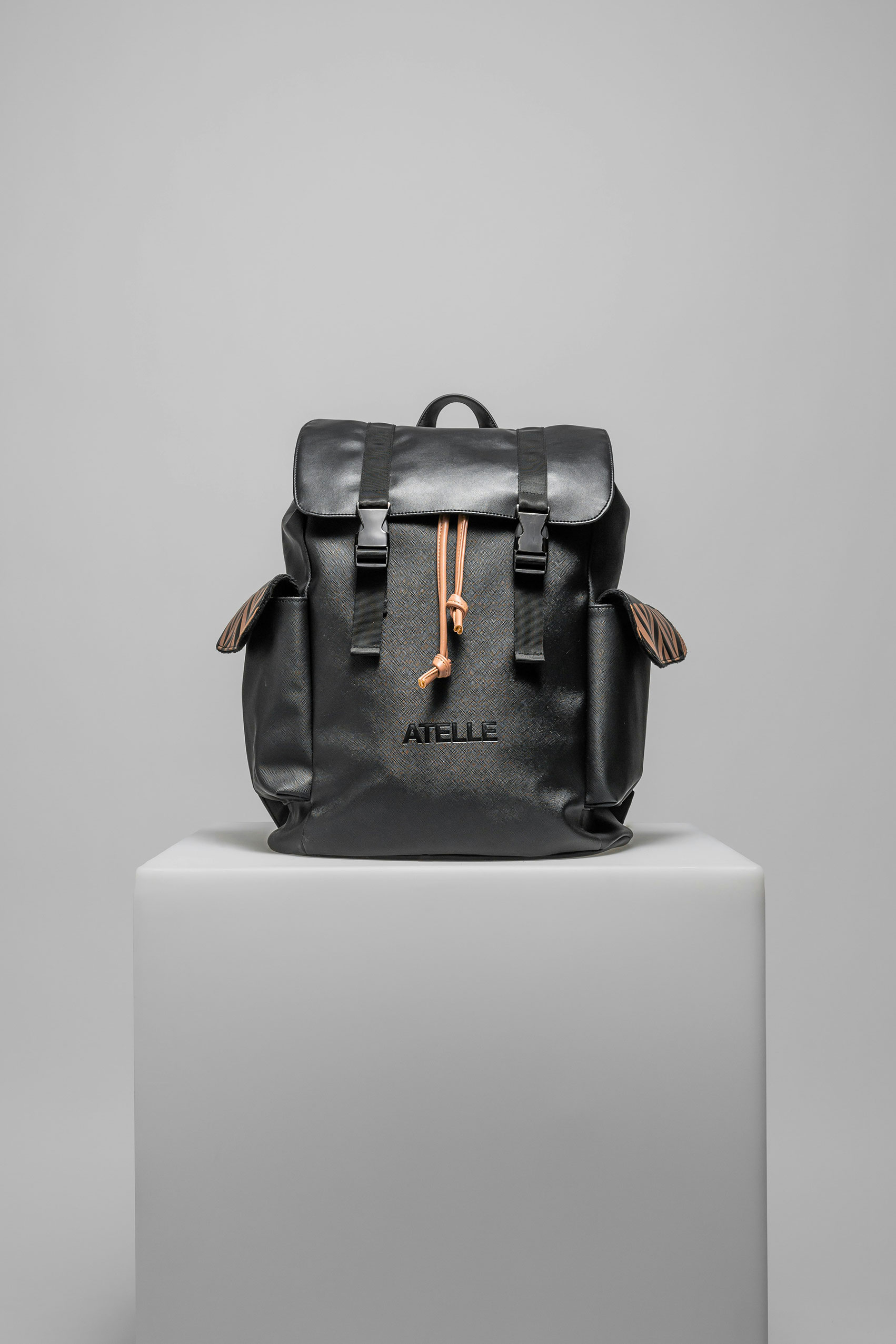People always ask me, How can I tell if a bag is really water repellent? As a bag blogger, I’ve checked out tons of bags in all sorts of weather. It turns out that what makes a bag resist water is more involved than you might think. It includes some cool stuff like chemistry and engineering!
I’ve spent years digging into this, testing bags, and talking to people in the business. Now, I want to share what I’ve learned about water repellent bag materials, without all the technical stuff.
Whether you bike to work in the rain, love being outdoors, or just want to save your laptop from spills, knowing about these materials can help you pick the right bag and keep it in good shape.
What Does Water Repellent Actually Mean?
First, let’s be clear about what water repellent means because even bag fans get mixed up sometimes.
Water Repellent vs. Waterproof vs. Water Resistant
Water Repellent bags make water form droplets and roll off, instead of soaking in. These usually have a thin coating that stops water but still lets the material breathe.
Waterproof bags block water completely. Think of a submarine – nothing gets through! But, these bags aren’t breathable or flexible.
Water Resistant bags slow water down, but if they’re wet long enough, water will get inside.
So, a water repellent bag pushes water away, while a water resistant bag just slows it down. For most people, water repellent bags give the best mix of protection and usefulness.
How Water Repellency Works
Water repellency happens because of how water acts on a surface. When water hits a special coating, it sticks together instead of spreading out. That’s why you see those water beads on waxed cars.
It’s all about making the surface less attractive to water. Water likes to spread out on surfaces that pull it in, but it forms droplets on surfaces that push it away. Special coatings do this by changing how water interacts with the material.
All About DWR (Durable Water Repellent) Coatings
Lots of rain gear uses a DWR finish, and it’s common in modern bag materials, too.
What DWR Coatings Do
A durable water repellent (DWR) is a thin, water-hating coating on the outside of your stuff. It makes an shield against water. This coating works at a tiny level, so water can’t stick to it.
Think of DWR as a layer of tiny spikes. Water can’t grip these surfaces, so it rolls off. It also stops other liquids, like coffee.
Kinds of DWR Coatings
C6 DWR (The Usual)
These coatings work great, but aren’t the best for the environment. Many companies still use C6 DWR because it works really well. It lasts a long time and repels water well, but it’s being used less because of its environmental damage.
C0 DWR (No PFAS)
For Spring 2025, new bag materials avoid PFAS, so they’re better for the earth. C0 coatings don’t work quite as well as C6, but they still do a good job and are eco-friendly.
Silicone-Based DWR
Newer treatments using silicone repel water and last a while. They go deep into the fabric, so they protect it longer.
How Well DWR Works and How Long It Lasts
DWR coatings wear out over time as you use and wash them. Oils from your skin and the environment can also hurt DWR. Better coatings can last for years if you care for them, but the cheap stuff might stop working after a few months.
If your DWR is failing, water will soak into the fabric instead of beading up. The fabric might feel wet even if it looks dry, and it won’t protect you from light rain. The good news is you can often fix or reapply DWR.
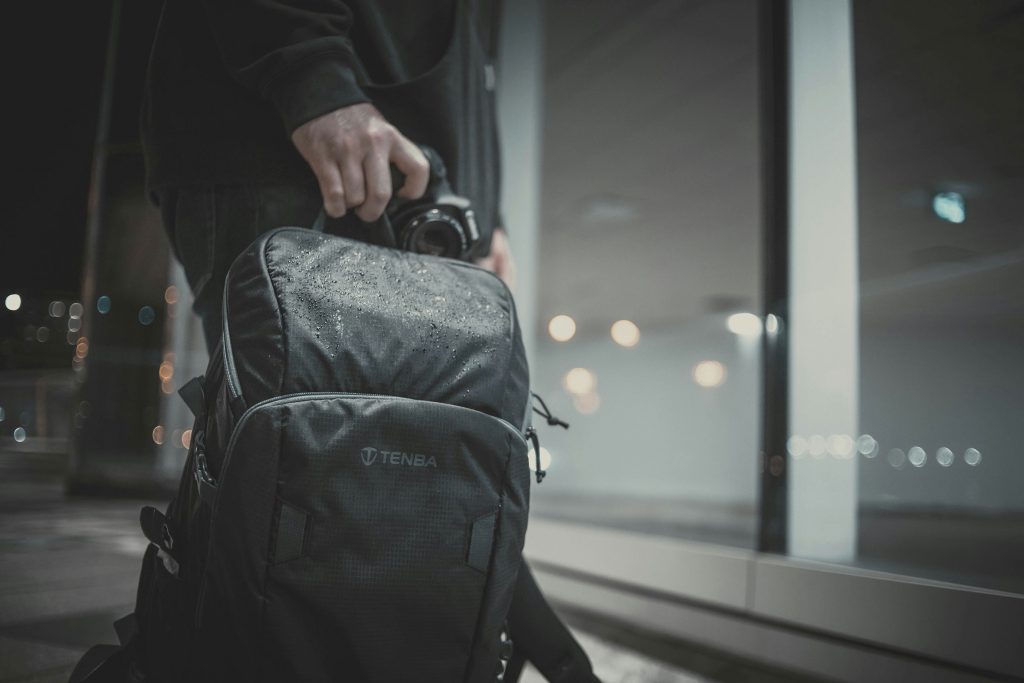
Common Water Repellent Bag Materials
Ripstop Nylon: The All-Around Best
Ripstop nylon with a PU coating is great. This fabric has a layer of PU (polyurethane) on the back and DWR on the front so it can block water. Ripstop nylon is a top pick for bags that need to repel water.
Why Ripstop is Great
The grid pattern isn’t just for looks. It stops tears from spreading, so the fabric lasts longer but is still light.
How It Repels Water
The coating, which could be PVC, PU, or silicone makes nylon block water better. Nylon is also stronger than polyester. Together, the fabric and coating give really solid protection.
What Denier Means
Denier is how thick the fibers are. Higher numbers mean thicker fibers. Here are some common deniers for bags:
- 70D: Light, good for daypacks
- 210D: Medium, great for travel bags
- 420D: Strong, for work bags
- 1000D: Super strong, for military uses
How It Works in Real Life
I’ve tested good ripstop nylon with DWR, and it handles light to moderate rain. You need to take care of the coating, though. If it fails, even the best ripstop will get soaked.
Polyester: A Strong Option
Polyester is good because it resists UV rays and keeps its color. It’s not as strong as nylon, but newer polyester fabrics work great against water.
High-Denier Polyester
Polyester at 600D and 1680D is often seen in luggage. These materials work well with DWR and stay protected longer than thinner fabrics.
Ripstop Polyester
Ripstop blends nylon and polyester to get the best of both. These blends can beat pure materials.
Canvas and Cotton Blends
Old-school materials like waxed canvas repel water using wax that goes into the fabric.
How Waxed Canvas Works
Waxed canvas blocks water really well and gets better as it ages. The wax moves through the fabric, filling holes and protecting it.
New Canvas Methods
Modern canvas mixes old materials with new DWR, so you get a cool old-fashioned look with new tech.
Newer Synthetic Materials
Cordura Nylon
Cordura nylon is a step up with more strength and works well with coatings. These materials have special treatments that are better than standard DWR.
X-Pac and Mixed Materials
Materials like X-Pac have several layers for good protection. These usually have:
- Outer fabric with DWR
- Waterproof layer
- Inner layer for comfort
Taking a Closer Look at Coatings
Polyurethane (PU) Coatings
PU coatings are bendable and waterproof. They’re the most popular way to waterproof bags materials.
How They’re Applied
PU can be put on by dipping, spraying, or using a blade. Each way makes different features:
- Dipped PU: Even, tough
- Sprayed PU: Light, breathable
- Blade-coated PU: Thickest, most waterproof
How They Work
PU coatings are bendable and strong, but they can peel over time, especially if they get too hot.
Silicone Treatments
Silicone goes into the fabric instead of just sitting on top. This does a few good things:
- Makes it last longer
- Keeps the fabric feeling good
- Resists UV rays
- Easy to fix
Silpoly absorbs less water and resists UV better than Silnylon, so it’s good for bags in the sun.
TPU (Thermoplastic Polyurethane) Films
TPU is a great waterproof tech option that works like this:
- Blocks water
- Is flexible
- Stands up to wear
- Can be clear
TPU films are often added to fabrics to make them waterproof.
Being Green and Avoiding PFAS
The outdoor industry is switching to materials without PFAS because they can be bad for the environment and our bodies. We’ve created a different option that skips PFAS but still works well.
Why PFAS are a Concern
PFAS (Per- and polyfluoroalkyl substances) stick around for a long time in the environment and in us. They’re good at repelling water, but since they can cause difficulties down the road, the industry is changing.
It’s a Trade-Off
PFAS-free materials work about 80-90% as well as the normal DWR. Most people agree that it’s worth it to help the environment. However, the old treatments still work for serious weather.
What’s Next
New research suggests future treatments could use plant waxes and other stuff from nature.
How Water Repellency is Tested and Rated
Standard Tests
Water Column Testing
This test measures how much water pressure a material can handle. The ratings are:
- 1,500mm: Light rain
- 5,000mm: Moderate rain
- 10,000mm: HEAVY rain
- 20,000mm+: Crazy weather
Spray Testing
This measures how well water bounces off surfaces. Ratings go from 1-5, with 5 being very repellent.
Real-World Factors
Tests in a lab do not always show how things work in real life. Things like:
- Rubbing
- Oils from your body
- Sunlight
- Washing
- Hot and cold weather
… all change how materials work.
Testing Methods
As a bag blogger, here’s how I check bags:
Coffee Test: See how they handle spills.
Rain Test: Walk in the rain to see how protected you are.
Long-Term Test: Use it for months to monitor performance.
Taking Care of Water Repellent Materials
Cleaning Tips
Cleaning your bag right makes a big difference.
Use the Right Cleaners
Normal cleaners can mess up DWR. Use special tech wash products.
Mind the Temperature
Use warm water (30-40°C). Hot water can ruin coatings.
Rinse Well
Leftover cleaner can attract dirt. Rinse a lot!
Fixing DWR
You can hire someone to fix DWR, but you can do it at home, too.
Heat It Up
A little heat can fix DWR by reorganizing the molecules. Try low heat in the dryer or iron it carefully.
Reapply Products
You can spray or wash new DWR onto stuff. Quality varies widely.
Storing Tips
Store your bag well to prolong its life:
- Clean it first
- Make sure it’s dry
- Don’t compress it
- Keep it out of the sun
Picking the Right Material
City Bags
City bags need to:
- Handle rain
- Resist spills
- Deal with daily wear and tear
- Look professional
Good Materials: 210D ripstop nylon with DWR, waxed canvas
Outdoor Bags
For the outdoors, you need:
- Rain protection
- Strength
- UV resistance
- Ability to deal with hot and cold
Good Materials: 420D+ ripstop nylon with PU, X-Pac, silicone treatments
Travel Bags
Travel bags face these challenges:
- Rough handling at airports
- Different weather patterns
- Long use
- Security
Good Materials: 1680D polyester with DWR, Cordura nylon, TPU fabrics
Cost
Materials range in price so consider this:
Basic : Simple DWR on nylon/polyester
Mid-Range : Good ripstop with coatings
Premium : Newer materials with special treatments
Ultra-Premium: High-end materials for specific work
Myths
Waterproof is Always Best
Waterproof isn’t always better than water repellent. Waterproof stuff doesn’t breathe. Water repellent bags are ideal for most situations.
DWR Lasts Forever
DWR wears out over time. This is just how it works.
Natural Materials Can’t Repel Water
Waxed canvas and leather can repel water well.
Expensive Means Better
Expensive doesn’t always mean better. Know what you need.
What’s Coming Next
Earth-Friendly Treatments
Companies are looking into:
- Plant proteins
- Natural waxes
- New polymers
- Recycled stuff
Smart Materials
Coming soon:
- Coatings that fix themselves
- Treatments that adjust to the weather
- Sensors that measure protection
- Systems that recycle
Going Green
The industry is looking at:
- Materials that can be recycled
- Treatments that break down
- Reducing waste
- Reducing pollution
Weather Around the World
Tropical
Think about these things for hot places:
- UV resistance
- Mold protection
- Quick-drying
- Ventilation
Cold Weather
Think about these things when it’s freezing:
- Coatings that don’t crack
- Materials that stay tough
- Snow shedding
Deserts
Think about these things in the desert:
- Dust protection
- Extreme hot and cold
- UV protection
Pro Gear vs. Store Gear
How They Are Different
Pro materials often involve:
- Being Stronger
- Special tests
- Lasting longer
- Resisting damage
Is It Worth It?
Pro gear is for:
- Work reasons
- Tough weather
- Saving money in the long run
Fixing Things
Quick Fixes
Here’s some quick fixes:
- Seam sealers
- Patch kits
- Waterproof sprays
When to Get Help
Hire a pro when:
- The coating is wrecked
- It’s peeling
- It’s broken
- It is under warranty
Conclusion
Knowing about water repellent bag materials helps you pick the right bags and keep them in good shape longer. Remember these tips:
Match the Material to What You Do: City life needs different protection than mountain hikes.
Caring for It Matters: Clean and maintain your bags. It prolongs their life.
Green Matters: PFAS-free options exist.
Price Isn’t Everything: Find an option that meets your needs rather than getting a really expensive option.
Things Keep Changing: Stay up to date on new materials.
The world of water repellent bag materials keeps changing. As we worry about the environment and want better products, we see new developments in how things work and how sustainable they are. Knowing about these materials helps you choose a bag that protects your stuff, no matter where you go.
Find a material for your use, habits, and what you agree with, so you can pick stuff that will last for years.
Common Questions
How long does DWR last?
DWR usually lasts 6-24 months, depending on how you use it.
Can I reapply DWR myself?
Yes, use spray-on or wash-in products.
Are PFAS-free treatments as good?
They’re close!
What’s water repellent vs. waterproof?
Water repellent is breathable. Waterproof isn’t.
How do I know when to renew DWR?
Water won’t bead up anymore.
#WaterRepellentBags #DWRCoating #BagMaterials #WaterproofBags #OutdoorGear #BagCare #MaterialScience #SustainableBags #TechTextiles #BagBlogger #GearReview #MaterialGuide #WaterResistant #BagTechnology
